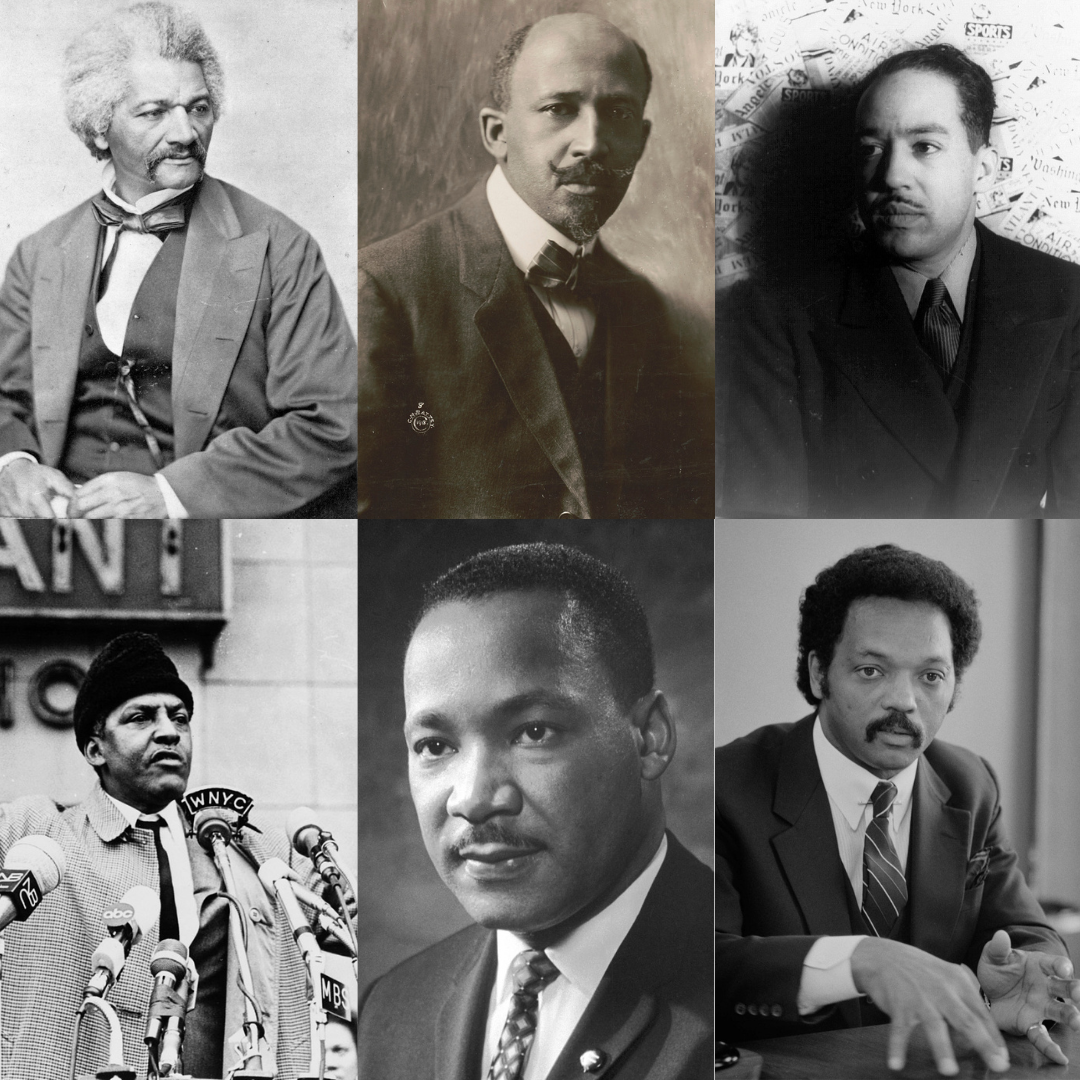Kicking Off Black History Month With A Celebration of Black and Asian Solidarity
NEW YORK (February 1, 2023) -- Partnerships and collaboration are at the heart of everything we do at CACF — which is why we’re spending this Black History Month discovering more about the long history of Black and Asian solidarity in the United States.
Whether it was a legendary civil rights leader using his voice to speak out against measures to bar Chinese immigration or a star of the Harlem Renaissance finding a connection to the Indian Independence Movement, Black and Asian communities have often sought to spotlight their shared struggles and experiences — and have used those commonalities to push for a stronger and better America.
We hope the following list will inspire you to have more conversations about how you can create moments of solidarity in your own lives and communities as we continue to push those in the halls of power to create a better world for us all.
Frederick Douglass spoke out against the Chinese Exclusion Act: In 1869 — amidst rising anti-Asian sentiment throughout the United States — Frederick Douglass became one of the most prominent figures in the United States to speak out in support of immigration from China. “I want a home here not only for the Negro, the Mulatto and the Latin races; but I want the Asiatic to find a home here in the United States, and feel at home here, both for his sake and for ours,” Douglass said during a speech in Boston. “The voice of civilization speaks an unmistakable language against the isolation of families, nations and races, and pleads for composite nationality as essential to her triumphs,” he continued.
W.E.B Du Bois’ friendship and collaboration with the Lion of Punjab: Did you know that many Black American leaders felt a personal connection to the Indian Independence Movement? In fact, W.E.B. Du Bois and Indian freedom fighter Lala Lajpat Rai (who was also known as the Lion of Punjab) had a close, decades-long friendship in which they shared ideas and dreams for the future. In one of his last letters to Rai, Du Bois enclosed excerpts from his novel The Dark Princess with a request for feedback on its Indian character. He was devastated when Rai died of his injuries after being beaten in a protest before he could read the final manuscript.
Langston Hughes put the Indian freedom struggle to verse: Another historical figure who often drew parallels between the experiences of Black Americans and the struggle for independence in India was author and poet Langston Hughes. These parallels were illustrated in poems like 1943’s “How About It, Dixie,” which included the lines:
Show me that you mean
Democracy, please –
Cause from Bombay to Georgia
I’m beat to my knees.
Black newspapers spoke out against internment during World War II: At a time when many mainstream publications were fanning the flames with regards to anti-Japanese and anti-immigrant sentiment, newspapers like the Los Angeles-based California Eagle regularly raised the alarm against internment.
As Professor Scott Kurashige wrote in The Shifting Grounds of Race: Black and Japanese Americans in the Making of Multiethnic Los Angeles, California Eagle columnist Rev. Hamilton T. Boswell regularly denounced the “the undemocratic evacuation of Japanese Americans” and at one point called it “greatest disgrace of Democracy since slavery.”
Bayard Rustin traveled to India in the 1940s to study the nonviolence movement: Later a trusted advisor of Dr. Martin Luther King, Jr, Bayard Rustin was imprisoned during World War II for resisting the draft. It was while he was in prison that he began organizing the Fellowship of Reconciliation’s Free India Committee, which spoke out against British colonial rule in India. After his release, he would travel to India to give several lectures on civil rights and study the Gandhian nonviolence movement — lessons that stayed with him when he returned home.
Martin Luther King Jr nominated Thích Nhất Hạnh for the Nobel Peace Prize: One of the international spiritual leaders Martin Luther King Jr. found a deep connection with was the Vietnamese Buddhist monk and peace activist Thích Nhất Hạnh. The pair first met in Chicago in 1966 as the Vietnam War was continuing to escalate. The next year, Dr. King would nominate Nhat Hanh for the Nobel Peace Prize, citing the monk’s message of nonviolence even as his people endured unjust oppression.
Rev. Jesse Jackson spoke at a 1984 rally in memory of Vincent Chin: While running for President in 1984, Rev. Jesse Jackson appeared alongside Vincent Chin’s mother at a rally in Los Angeles’ Chinatown memorializing her son. "Our hearts are made heavy by a mother who sits here with us, whose son was brutally killed, just because he was. What can we do in the aftermath?" Throughout his remarks, Jackson drew parallels between Chin’s killing and the murder of Emmett Till in 1955 and asked how the U.S. could “redefine America” so that both Asian and Black communities could feel safe from fear in the United States.
Be sure to follow CACF on Instagram and LinkedIn throughout February and beyond for more stories about solidarity and community. For more information, please contact Lakshmi Gandhi, CACF’s Senior Communications Coordinator at lgandhi@cacf.org.


